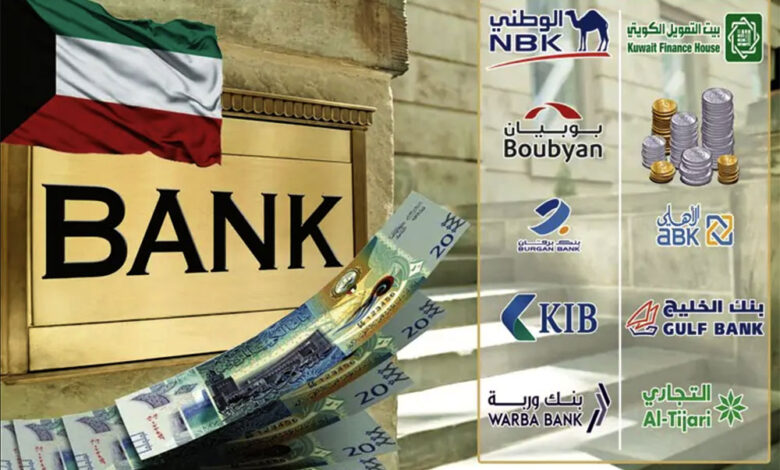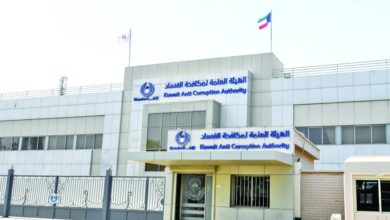
Kuwaiti banks are considered as one of key pillars of the national economy, supported by strong financial indicators that strengthen their resilience against economic challenges.
The financial safety indicators of the banking sector in the third quarter of 2024 demonstrated the cohesion of all financial indicators, as banks maintained capital adequacy ratios exceeding the minimum required according to Basel III standards. This indicates their ability to absorb financial shocks and protect the rights of depositors. Recent data revealed that the capital adequacy ratio exceeded 18.2%, much higher than the recommended ratio of 10.5%.
Banks in Kuwait enjoy high levels of liquidity, supported by the Central Bank of Kuwait’s conservative policies that emphasize risk management, ensure liquidity flow in the banking market, and maintain low rates of non-performing debt.
Non-performing loan ratios in local banks are among the lowest in the region, ranging between 1.5% and 2% in recent years, due to strict risk management and robust asset quality measures.
Kuwaiti banks have recorded stable net profits over the past years, driven by growth in revenues from financing and investment activities, coupled with an increased contribution from digital services.
Importantly, Kuwaiti banks have received strong credit ratings from international agencies like Moody’s and Fitch, reflecting their financial stability and the confidence they enjoy in both local and international markets.
According to monitoring conducted by Al-Anba, the most prominent indicators of the financial safety of local banks by the end of the third quarter of 2024 are as follows:
- The capital adequacy ratio for the Kuwaiti banking sector according to the Basel III standard, reached 18.2% by the end of the third quarter, up from 18.1% recorded at the end of the second quarter. Meanwhile, the first tier capital ratio to the asset base was 87%, recording a slight decrease from 87.3% at the end of the second quarter of 2024.
- The ratio of non-performing loans at the end of the third quarter to total loans reached 1.7%.
- The coverage ratio of non-performing loans reached 255.5%, reflecting sufficient, large, and reassuring provisions for local banks. This coverage includes both general and specific provisions, indicating strong risk management and local caution. The regulatory liquidity ratio reached 22.2%, up from 21.4% at the end of the second quarter.
- The ratio of net non-performing loans (non-performing loans minus specific provisions) to net total loans (total loans minus specific provisions) reached about 1.1%.
- The ratio of shareholders’ equity to total assets reached 13.5% compared to 13.4%.
- The banking sector continues to maintain an acceptable net interest margin (the ratio of net interest income to average interest-earning assets) at 2.9%, a ratio that has witnessed remarkable stability since the second quarter of 2024.
- The net profit margin for banks, both conventional and Islamic, (the ratio of net profit to net interest income and non-interest income) remains at good levels at 41.9%.
- Kuwaiti banks continue to focus on core activities, such as lending and operational banking operations, with the ratio of core income (net interest income + net fee income) to operating income (net interest income + non-interest income) gradually increasing to 85% by the end of the third quarter, marking the highest ratio ever recorded by banks.
- The ratio of operating expenses (interest expenses + non-interest expenses) to total revenues (interest income + non-interest income) recorded the highest level in recent years at 73.2%, while the net interest margin reached about 2.9%. This margin represents the ratio of net interest income to average interest-earning assets (AIEA), including time deposits with the Central Bank, deposits with banks and other financial institutions, investments in government bonds, investments in fixed-income securities, and net loans.
- The ratio of non-interest expenses to average assets amounted to about 1.5%, while the return on average assets amounted to 1.5%, and the return on average equity amounted to 10.9%.
Overall, the financial safety indicators of Kuwaiti banks reflect the strength and durability of the banking system and the quality of its assets, highlighting its ability to overcome future crises or challenges.
The high coverage rate of non-performing loans is among the highest globally, and the capital adequacy ratio exceeds the requirements set by the Central Bank of Kuwait.
These facts highlight the strength of the banking system, its ability to achieve financial inclusion, and the effectiveness of financial mediation in Kuwait.













